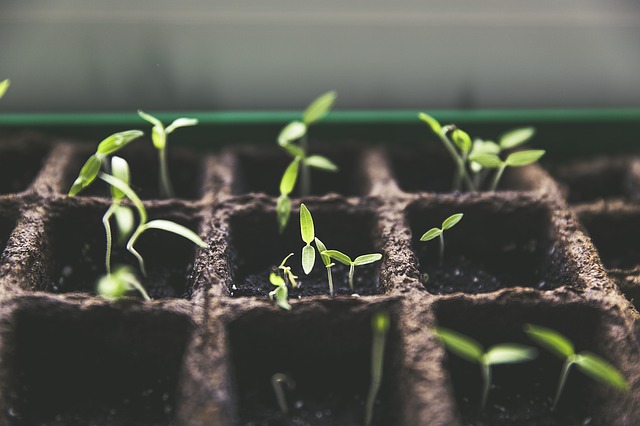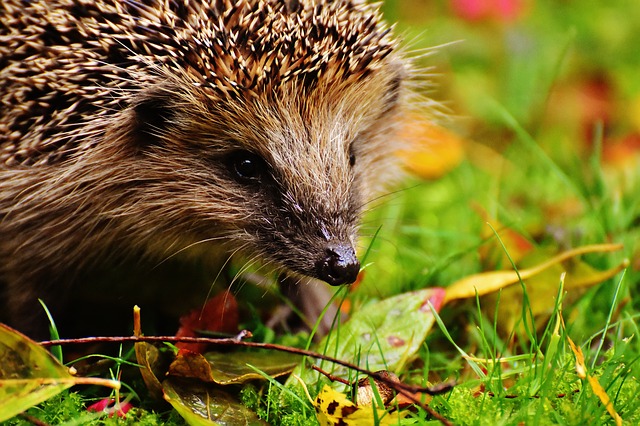Last updated on October 23rd, 2023 at 08:53 pm
Contents
- 1 Reasons for the plague of snails
- 2 1 Chemical crop protection can cause a plague
- 3 2 Too much order in all corners
- 4 3 Chickens and ducks in the coop
- 5 4 Global warming and mild winters
- 6 5 Breeding susceptible plants
- 7 6 Increasing light pollution
- 8 Conclusion
- 9 Long-term countermeasures and prevention
- 10 Immediate help against acute snail plagues
- 11 Author
Reasons for the plague of snails
Usually there are several causes that must come together for a snail plague to occur.
If there are suddenly huge numbers of snails in the garden and eat everything short and small, then it is often an unmistakable sign that the natural balance is disturbed.
For it is false that the Spanish slugs responsible were not native to Central Europe and also that they have hardly any natural enemies here. These are fairy tales that still run through many minds, but have turned out to be “fake news”.
In Spain, these particular snails did not exist at all. They have only recently immigrated there as well.
Actually, “Spanish” road snails originated in Central Europe, as new genetic studies have shown.
They are closely related to the locally known red and black slugs and have the same natural enemies, only these enemies have mostly disappeared from gardens.
Therefore, the search for the causes of the many snail infestations is also a question about the reasons why the diversity of species in many gardens and in nature in general has declined sharply.
Chemical poisons, which revolutionized agriculture and gardening in the post-war period, are primarily responsible for this.
But this is not the only reason. Here is a short list of various reasons why snails have been able to spread so rapidly.
1 Chemical crop protection can cause a plague
The use of slug poisons (metaldehyde, methiocarb and iron III phosphate) kills not only the harmful slugs, but also their enemies. Namely, spotted slugs and black-striped slugs (tiger snails) eat the eggs of their relatives.

If insecticides are used, many species of beetles die, as well as fly species that might normally keep the slug population in check.
In addition, toads, hedgehogs, amphibians and lizards are also very sensitive to the use of insecticides. This is because when the insects die, they are missing an important component of their diet.
Therefore, the slugs’ enemies disappear from gardens where pesticides are widely used. Thus, the predators of adult slugs are then absent and the slugs can multiply without danger.
It is also necessary to pay attention to what the “dear” neighbors do. Because if poisons are used there, this can also have a negative effect on the biodiversity in your own garden.
In principle, everyone is allowed to use pesticides, but perhaps a mutually agreeable solution can be found with which everyone can live well.
2 Too much order in all corners
There is no such thing as untidiness in nature. What appears unclean and untidy to humans is a source of life for many animals.
Therefore, in the garden it helps to make sure that the enemies of slugs can always find ‘messy’ places to live and retreat.
The more such places there are, the greater the diversity of species in the garden. And the more species-rich the garden, the less likely it is that a plague will occur.
Therefore, it is important to create habitats for the animals, such as piles of leaves and places where dead wood can slowly decompose.
Similarly, it is of great advantage to have a pond in the garden or at least a small watering hole.
Likewise, a stone wall or a pile of stones with many cracks and loopholes can become a small biotope. This is because many enemies of slugs feel at home in it, such as lizards or even various species of beetles.
3 Chickens and ducks in the coop
The fact that chickens and ducks could run around freely on the farm, I still know from childhood from my grandparents.
Her affectionate chickens followed my grandmother at every turn around the yard and through the garden. At that time, these animals also tracked down and ate many snails and their clutches.
But today you can hardly find free-range poultry. Mostly chickens and ducks today live in pens and enclosures.
This is another reason why snails in the garden became more and more a problem.
4 Global warming and mild winters
Climate warming is no longer a secret and it helps slugs.
Because when the frosts are absent, slugs and also their eggs get through the cold period more easily.
The eggs of snails should be able to withstand temperature up to 20 degrees below zero, and the snails themselves down to minus 10 degrees.
Therefore, it really needs very frosty periods to harm the snails, and they are increasingly absent.
However, many enemies of the snails also benefit from the moderate temperatures.
Therefore, this is not the decisive point. Nevertheless, climate change plays a role in explaining the increasingly frequent of snail infestations.
5 Breeding susceptible plants
There are always new breedings to increase the yield, but rarely attention is paid to the resistance of plants.
As a result, many plants have spread in gardens and fields that are no longer equipped with defenses against slugs. The plants no longer know how to defend themselves against pests such as slugs.

However, a change in thinking is slowly taking place here and more and more value is being placed on resistance again in organic farming. The protection of old species also plays an important role here.
Therefore, it is important to closely observe which plants are avoided by the slugs and which they prefer, so that the selection of cultivation for the next few years can be adjusted accordingly.
This is a first preventive step to reduce the damage caused by slugs.
More info on the topic here: Plants that snails like to eat
6 Increasing light pollution
More and more light is illuminating the night. This makes people’s lives safer, but it harms many nocturnal animals. Insects in particular suffer from this modern phenomenon.

Streetlights and increased road traffic at night are affecting populations of moths and other light-sensitive animals.
Fireflies have completely disappeared from most populated areas. This is because fireflies are particularly vulnerable to light pollution. At the same time, they are industrious and highly specialized slug hunters. This is because the larvae of fireflies feed exclusively on snails for several years.
Hedgehogs also suffer when there are fewer insects. This is because they particularly like to eat moths and this food is important for their immune system.
If hedgehogs eat too many snails and too few insects, they can get lung disease.
Conclusion
There are many causes that have contributed to slugs becoming a nuisance.
The real reasons for the proliferation of slugs since the 1960s lie not in the distance, but in changes on the ground.
They lie mainly in the increased use of environmental poisons and the widespread love of order in domestic gardens. As a result, the natural abundance of species in the garden has suffered.
Biological balances have been upset in many places, and the mass appearance of slugs is one consequence.
The death of native flora and fauna has made this development possible. Therefore, it is now up to us to take countermeasures.
There are many ways and means to slowly return to a more nature-friendly way of life. For many species it is not yet too late.
Here are a few tips on what you can do for biodiversity in the garden: Re-establish predators of slugs and snails
Long-term countermeasures and prevention
So it is advisable in the long term to return to a near-natural garden that provides a habitat for many animals.
In doing so, care should be taken to allow as many different native perennials and woody plants as possible to flourish, from which the native animals actually benefit. Foreign plants often do not adequately serve as a habitat for native wildlife.
An increase in biodiversity not only prevents slug infestations. After all, other pests, such as aphids, mites or Colorado potato beetles, can only develop into a plague if their enemies have disappeared from the garden.
Therefore, species protection not only serves the flora and fauna as a whole, but also the snail-plagued gardeners in the long term.
Immediate help against acute snail plagues
Returning to a more natural garden and reintroducing enemies will only help in the long run against the snail plague. It often takes years for species that have disappeared to reestablish themselves.
Therefore, there are many measures and remedies that promise relief even in acute emergencies. Without having to use poison, you can get a grip on the plague.



